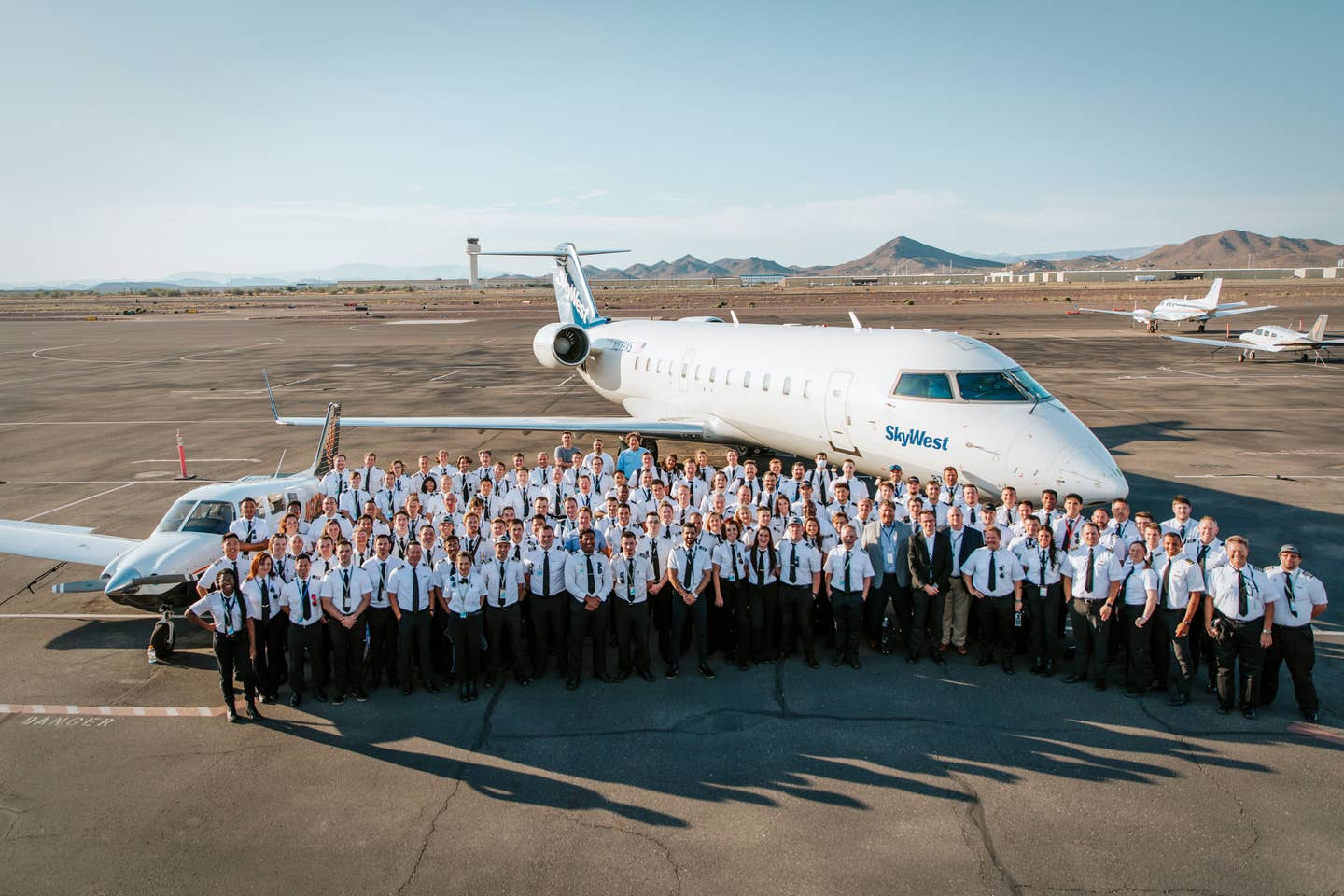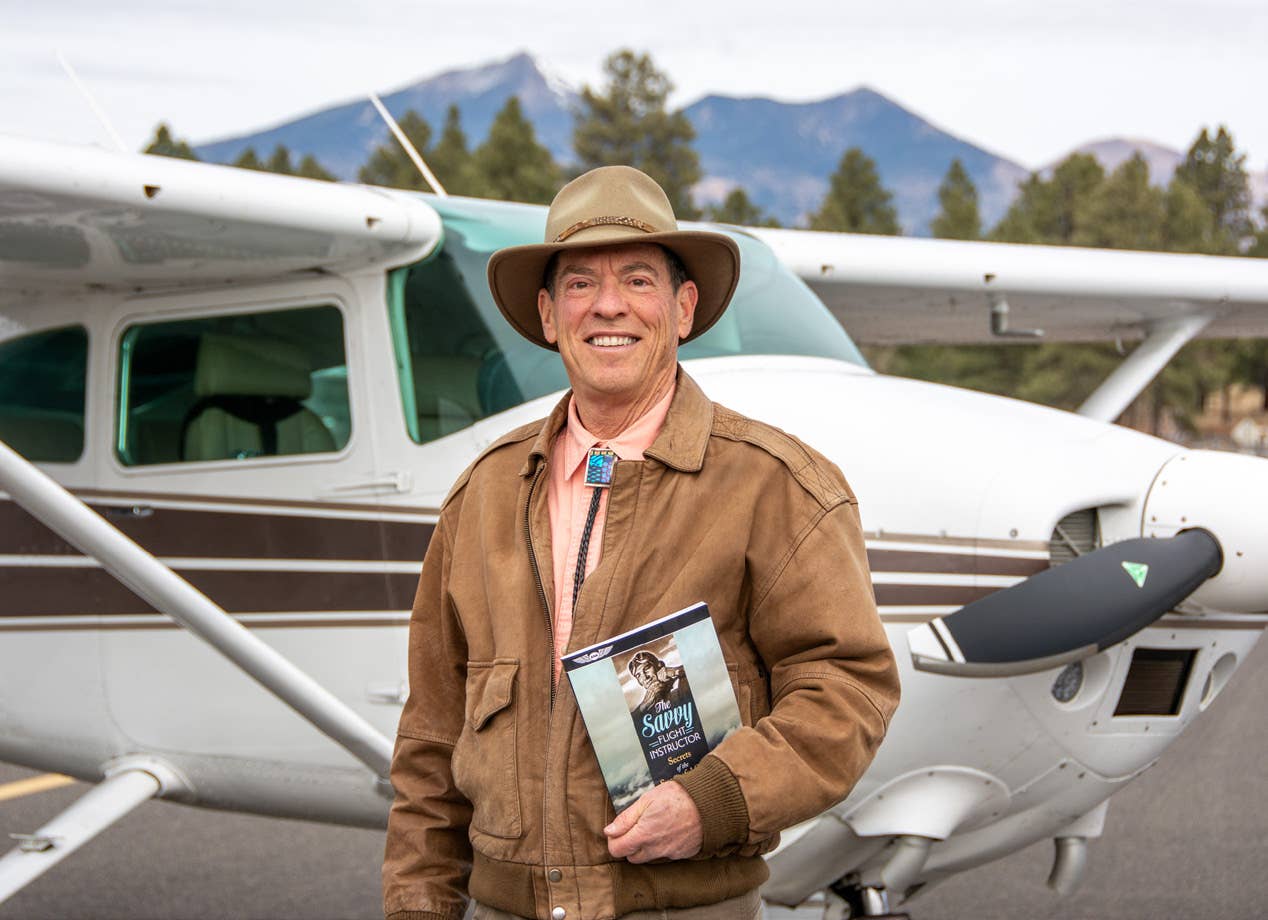
With more than 40 years of experience, four U.S. training locations, and a fleet of 70 aircraft, AeroGuard Flight Training Center is dedicated to fast-tracking its students to careers as professional pilots.
“We have a structured curricula that takes students through each of the training stages. The way we do things, the way we operate is modeled on the airline environment,” said James Constable, chief marketing officer for AeroGuard Flight Training Center. “At AeroGuard, it’s not a case of jumping in a plane with a flight instructor, and them saying, ‘What do you want to do today?’ Our students have missions, line items for training and completion standards; that is the goal and that’s what we do here—prepare people for very long and very successful careers after they leave us.”
FAA Part 141 School
Far exceeding the training services provided by an FBO, AeroGuard is an FAA Part 141 school that offers courses aligned with both Part 141 and Part 61 to meet students’ needs. AeroGuard also has an FAA-Approved Reduced Hours CPL course based on its rigorous curriculum and structured environment, enabling students to complete training in less time and at a lower cost. The school operates a campus-like facility at its headquarters in Deer Valley, just north of Phoenix. “We have 35,000 square feet here, four buildings, a ramp area, 10 classrooms, and lots of briefing rooms,” Constable said.
AeroGuard also operates three other growing campuses, one south of Phoenix, in Chandler, one in Austin, Texas, and another in Fort Myers, Florida. All of its training facilities are purposely located in the “sunbelt,” to optimize year-round flying opportunities for students. And, while the school does not have residence halls, it can coordinate optional housing in local apartment buildings for the students who need it. “At the moment we have room for just over 100 students,” Constable said. “There’s an additional cost for housing, but it’s one less thing for our students to have to worry about when relocating to AeroGuard. We also connect students together for roommate and cost-sharing purposes.”
All of AeroGuard’s facilities incorporate the latest Redbird simulators, and train students from zero experience through the successful completion of seven FAA certificates/ratings needed to launch their career as airline pilots: private, instrument, commercial single-engine, commercial multiengine, certified flight instructor, certified flight instructor - instrument, and multiengine instructor.
Emphasis on Professionalism
The training is intense and accelerated. “It’s a full-time program,” Constable said. “We don’t recommend the students try to maintain outside employment; it’s a focused program with the goal of getting them to the airlines quickly.”
Professionalism is part of the training program, as well, from preflight to post-flight, down to the uniforms the students wear. “We’re trying to prepare our students for life as a professional pilot. Our processes, policies, the way we operate all align with that goal,” Constable said. “A lot of other flight schools, it’s very casual, shorts and flip flops, that’s not our style.” In fact, if you’re looking to fly recreationally by earning a private pilot certificate, he says, look elsewhere. “We only do career-based training here,” Constable said. “Our focus is on commercial, professional airline pilots.”
To that end, AeroGuard has elected to have one close domestic airline partnership with SkyWest Airlines, as well as agreements with several international airlines.
A Pathway to Success
Acknowledging the significant investment of time, effort, and treasure it takes to become an airline pilot, AeroGuard has created a streamlined path for its students, offering them CFI roles upon graduation. This creates a path for students to build flight time experience while earning a paycheck and advancing toward their career goals.
This guaranteed CFI role, facilitated by AeroGuard’s international airline partnerships, that provides many students with opportunities to train and build flight time.
Typically, working as a CFI is one of the quickest ways to earn the flight hours and experience necessary for becoming an airline transport pilot. “From the beginning of our program to becoming a first officer at a regional airline, it usually takes two to two and a-half years,” Constable said. “As a student, it’s about one year’s time.” The rest of the time is spent working as a CFI for the school or gaining flight hours elsewhere.
Guaranteed Interview With SkyWest
According to Constable, a second advantage for AeroGuard students is the school’s close partnership with SkyWest. “AeroGuard maintains one integrated partnership with the largest regional airline in the U.S., providing tangible benefits to students, versus many-partnerships without gain,” Constable said. All AeroGuard students are eligible to participate in SkyWest’s Pilot Pathway Program, which includes mentorship opportunities and guarantees a first officer interview with the airline after they have completed their training and earned the required flight hours.
“And, there’s a very high acceptance rate going through that interview,” Constable said, which is a testament to the quality education students receive at AeroGuard. Moreover, the interview with SkyWest may be the first step in an AeroGuard graduate’s flight path to a right seat at one of four major airlines with which SkyWest partners: Southwest, Delta, United, and Alaska.
“Our partnership provides a clear path from training to SkyWest first officer, Captain, and ultimately to fly for one of our major partners through our Guaranteed Interview Program, if that’s their career objective,” said Tracy Gallo, senior vice president of flight operations for SkyWest. “In addition to the training they receive at AeroGuard, we regularly hold workshops and provide opportunities for their students to receive mentorship from SkyWest pilots.”
AeroGuard students who become SkyWest cadets also qualify for tuition reimbursements of up to $17,500 to help them advance their dreams of becoming commercial pilots.
According to Gallo, AeroGuard graduates hired by SkyWest are for success. “[AeroGuard has] established a reputation for training well-qualified pilots who have chosen to come to SkyWest after completing their training,” he said. Another perk of AeroGuard’s relationship with SkyWest: Students start earning seniority with the regional airline the day they sign up for the Pilot Pathway Program, and there is no commitment on the student’s part. “Ultimately, if they choose to join SkyWest, it helps them to have higher seniority, picking their domicile base, flight benefits, that kind of thing,” Constable said, but AeroGuard graduates are not locked-in following training, including the CFI job at AeroGuard itself.
Seeking a College Degree and Flight Certifications?
While most major airlines no longer require new-pilot hires to have a college degree, a degree can help candidates in the application process, and may also help them fund their flight training. AeroGuard offers an option for students who wish to earn a degree simultaneously with their flight certifications through its partner institutions: Liberty University and Purdue Global University. The online programs give students the opportunity to earn a bachelor’s degree in aviation (Liberty) or a bachelor’s degree in professional flight (Purdue). It can take degree-seeking students a little longer to complete their flight training as they balance other course work, Constable said; but this is partly offset by the R-ATP the degree allows graduates to pursue. The R-ATP reduces the FAA-required flight time to 1,000 hours versus the usual 1,500 hours, to be hired as a first officer.
A Standardized Fleet
AeroGuard operates a standardized fleet of Piper aircraft. Students fly Piper Archers and Piper Seminoles for single and multiengine training, respectively, with two Cessna 152s in the AeroGuard fleet to train students in spin and upset recovery.
The operation of a standardized fleet improves efficiency and the student learning experience; whichever assigned aircraft a student receives will operate the same way, providing a consistent training experience. Additionally, the all-Piper, low-wing fleet makes it easier for students to transition from single-engine to multiengine training, as they already have familiarity with the aircraft’s basic handling and flight deck.
Making It Happen
AeroGuard offers two pricing models for its flight training; a flat rate and a pay-as-you-go hourly option. Within these programs, students can pay as little as $80,000 plus check ride fees for seven FAA ratings using AeroGuard’s Reduced Hours 141 CPL Program. The school has several loan partners that will work with students to finance their education. Additionally, students who elect to pursue a bachelor’s degree in concert with their flight training may be eligible for federal student loans and grants through the FAFSA, as well as Veterans Administration and G.I. Bill funds (for qualified veterans).
Regardless of how students choose to pay for their training, one thing is certain, Constable said: “AeroGuard gives its graduates a foundation that they’re able to build on that will benefit them throughout their career…An AeroGuard graduate will stand out in their class at the commercial airlines.” Learn more about AeroGuard Flight Training Center at flyaeroguard.com.
By the Numbers
400 students (current enrollment)
70 aircraft, mostly Piper Archers and Piper Seminoles; and two Cessna 152s
4 locations (Deer Valley/North Phoenix, and Chandler, Arizona; Austin, Texas; and Fort Myers, Florida)
1 year as a student; 2 years from start to airline (includes time-building as a CFI for AeroGuard or elsewhere)
$85,000, flat-rate cost (includes check rides)
7,000-plus graduates since 1999
2 optional online degree programs (Purdue Global University and Liberty University)
1 regional airline partner (SkyWest Airlines)

Sign-up for newsletters & special offers!
Get the latest FLYING stories & special offers delivered directly to your inbox






